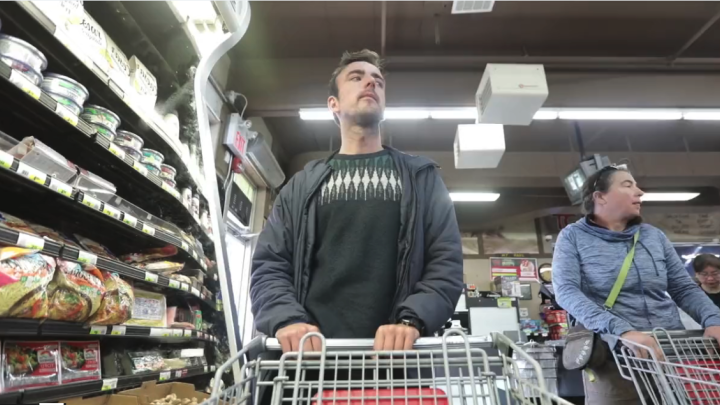Striking Gold in Montana
The next stop on the Stretch itinerary is just outside of Yellowstone National Park. Edward Meyer, a senior lecturer and the Stretch’s program director, leads a segment on economic geology and its environmental impact.
“The students create a geologic map of a historic gold mining region,” Meyer says. A major discovery of gold was made here in the 1980s, he says.
“One of the challenges for the students is to think about where this gold resource actually sits in the subsurface. They create maps and stake claims—we actually dress up like old-time miners and they come into a claims office and place their claims on a map.”
The students make creative presentations—some groups performing skits and musical numbers.
“We had to use creative methods to display findings from the field, so everyone put together different shows,” says Bond. “My group changed the lyrics to Piano Man to talk about rocks. I played guitar. It was a great time. Everyone had a ton of fun—a lot of people walked away saying that was their favorite night of the Stretch so far.”
Quote
Going into Dartmouth, you hear a lot about the student-teacher relationship, but on the Stretch I have seen that through and through, with every professor.
Attribution
Liam Jolley ’20
On this section of the Stretch, the students stay in a family-owned wilderness lodge called the K Bar Z, where Stretch groups have been staying for more than a decade.
“Going to K Bar Z was a huge part of the Stretch for me,” Bond says. “It’s this little ranch in the middle of nowhere. The field location was incredible—it was gorgeous, I was learning a lot academically, and when you get back to camp, no one has service, so everyone’s just hanging out with each other. I think as a group we were always really tight, but at K Bar Z was when we really glued together. For me that segment was a big turning point on the Stretch.”
“We were celebrating someone’s birthday and dancing at the K Bar Z, and the song Wagon Wheel came on,” April Johnson ’20 says. “Everyone put their arms around each other and swayed and sang together. It was the end of the night and everyone was tired and ready to go to bed, but everyone was just there with each other.”
On one of the program’s off days, the students hike Henderson Mountain with Meyer.
“Going into Dartmouth, you hear a lot about the student-teacher relationship, but on the Stretch I have seen that through and through, with every professor,” says Liam Jolley ’20. “During our hike near K Bar Z, I talked to Ed for two hours. We were just enjoying each other’s company, which I think you don’t have time for on campus.”
















